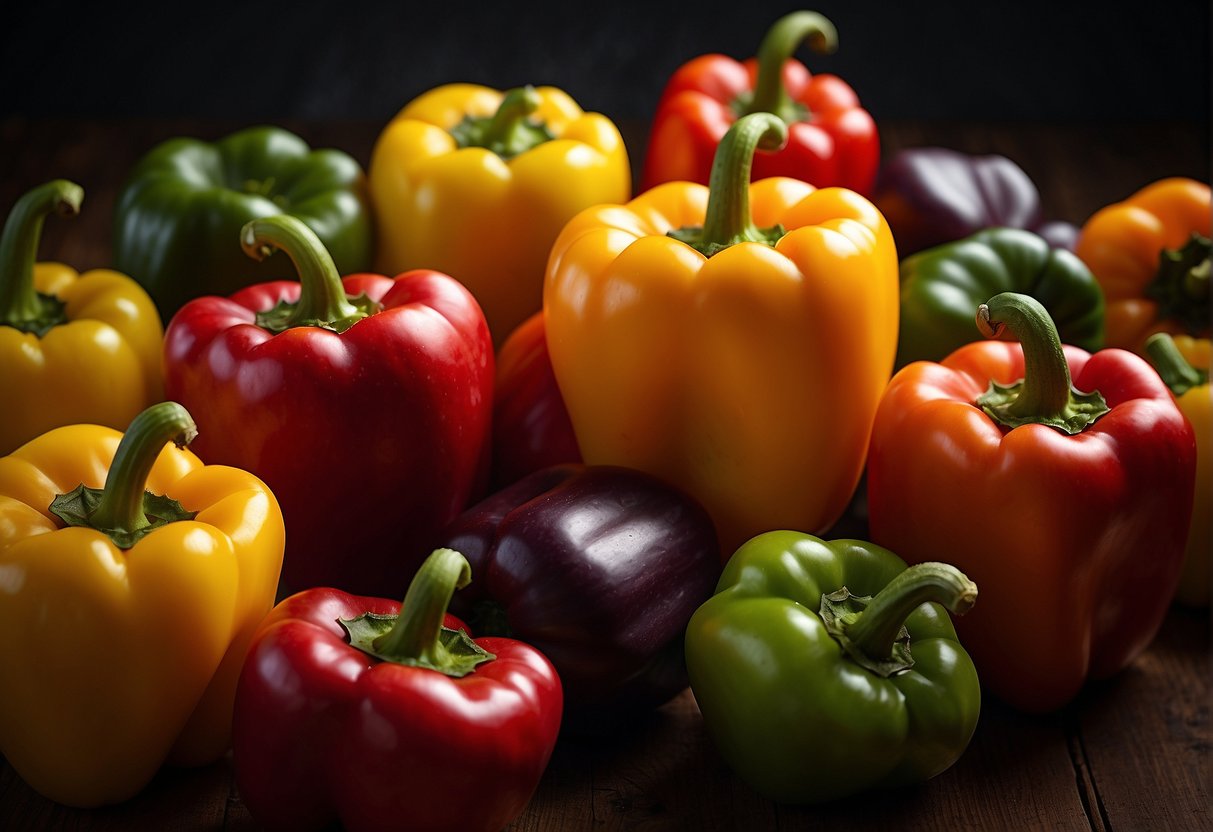Benefits and Fun Facts About Bell Peppers: Colorful Crunch for Healthy Eating

When you buy through links on our site, we may earn an affiliate commission at no additional cost to you (learn more)
Bell peppers, with their splash of vibrant colors and sweet, sometimes slightly zesty flavor, have become a staple in many cuisines around the world. They are not just a colorful addition to a dish; bell peppers are packed with a variety of vitamins and minerals that offer a range of health benefits. These versatile vegetables are rich in Vitamin C, a powerful antioxidant, and they also provide a good dose of Vitamin B6, Vitamin A, and folate.
One of the lesser-known fun facts about bell peppers is that they are actually fruits, not vegetables because they stem from the flowering part of plants and contain seeds. Despite their fruity status, they are commonly used and enjoyed as vegetables. They come in different colors, including green, red, yellow, and orange, and these colors are indicative of their ripeness and flavor profile. Green peppers are harvested earlier, giving them a slightly more bitter taste, while the red ones are the sweetest, as they are left on the plant to mature longer.
Adding to their appeal, bell peppers are incredibly versatile. They can be enjoyed raw in salads, sandwiches, and as a crunchy snack with dip, or they can be cooked and incorporated into a wide array of recipes such as stir-fries, stuffed peppers, and casseroles. Their hollow nature makes them perfect for stuffing with proteins and grains, while their sweetness can enhance the flavor profile of many dishes. This balance of health benefits and flavor makes bell peppers an enjoyable ingredient to incorporate into daily meals.
Nutritional Value of Bell Peppers
Bell peppers are a colorful and nutritious addition to any meal, offering a range of vitamins and minerals with low caloric content and a decent amount of dietary fiber.
Vitamins and Minerals
Bell peppers are particularly high in Vitamin C, providing much more than the daily recommended value in just one cup. They are also a good source of Vitamin A, which is essential for eye health. In addition to these, bell peppers contain a variety of minerals, including:
- Potassium: Important for maintaining electrolyte balance.
- Magnesium: Crucial for muscle and nerve function.
- Iron: Necessary for transporting oxygen throughout the body.
| Vitamin/Mineral | Amount in 1 cup (149g) |
|---|---|
| Vitamin C | 190.3 mg (211% DV) |
| Vitamin A | 3726 IU (75% DV) |
| Potassium | 261 mg |
| Magnesium | 19 mg |
| Iron | 0.6 mg |
Caloric Content
Bell peppers are low in calories, making them an excellent choice for weight management. A one-cup serving of chopped red bell pepper contains approximately:
- Calories: 46
- Total Fat: 0.4g
- Saturated Fat: 0g
Dietary Fiber
They provide a good amount of dietary fiber, which is important for digestive health and can help with maintaining a healthy weight. A one-cup serving offers:
- Dietary Fiber: 3.1g, which is about 12% of the daily recommended intake.
Culinary Uses and Varieties
Bell peppers are not only vibrant in color, but they also bring a range of flavors and textures to a variety of dishes, making them a versatile ingredient in kitchens worldwide.
Colors and Flavors
Bell peppers come in an array of colors, including green, red, yellow, orange, and sometimes even purple or chocolate brown. Each color represents a different stage of ripeness and brings its own unique taste:
- Green: Slightly bitter, they are the unripe version of peppers.
- Red: Sweet and fully ripe, with nearly twice the vitamin C of green peppers.
- Yellow and Orange: Sweeter than green, less so than red.
- Purple and Chocolate Brown: Rarer and can taste slightly sweeter than green peppers, but not as much as red.
Cooking Methods
Bell peppers can be prepared using various cooking methods to enhance their natural sweetness or add a smoky depth to their flavor:
- Raw: Sliced or diced in salads, sandwiches, or as a crunchy snack.
- Roasted or Grilled: Charred on the outside, adding a rich, smoky flavor.
- Sautéed or Stir-Fried: Quickly cooked to retain their crunch and bright color.
- Stuffed: Filled with grains, meat, or cheese, and then baked.
Popular Dishes
Bell peppers are integral to countless dishes across multiple cuisines:
- Italian: Stuffed bell peppers with rice, meats, and herbs.
- Mexican: Fajitas featuring sliced bell peppers with onions and spices.
- Asian: Stir-fries utilizing a mix of yellow and red peppers for sweetness and color.
- American: Classic sausage and pepper sandwiches with sautéed bell peppers.



